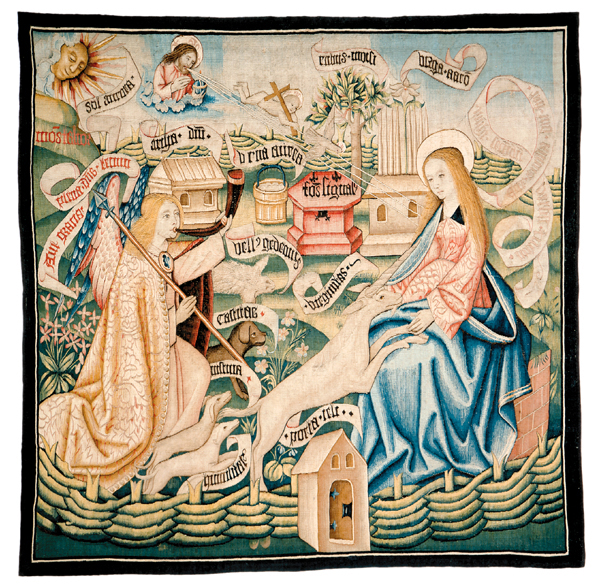Image Details

Bayerisches NationalMuseum, Munich
Garden variety annunciations. A unicorn—a symbol of sexual potency—climbs into Mary’s lap on a German tapestry (shown here, compare with photo of 1445 Annunciation) from around 1500, which combines the popular medieval tale of the unicorn hunt with more traditional Annunciation imagery. According to legend, the unicorn could only be tamed (and thus caught) in the lap of a virgin. Here, Gabriel, dressed as huntsman, blows a horn to announce that the hunt is on, while the dove and infant Jesus (already carrying a tiny cross in anticipation of the crucifixion) travel on rays of light from God’s mouth toward Mary’s breast. Dating to 1500, the tapestry hangs in Munich’s Bayerisches Nationalmuseum.
Even without the unicorn hunt motif, it was common for Annunciations to be set in or near a garden. The enclosed garden (called in Latin the hortus conclusus) symbolizes Mary’s virginity and alludes to the Song of Solomon 4:12: “A garden locked is my sister, my bride.” It also refers back to the original garden, Eden. By bearing the redeemer, Mary was believed to have reversed the disaster of the Fall in Genesis 3, so it was not uncommon to show both events side by side.
